Because…puffins
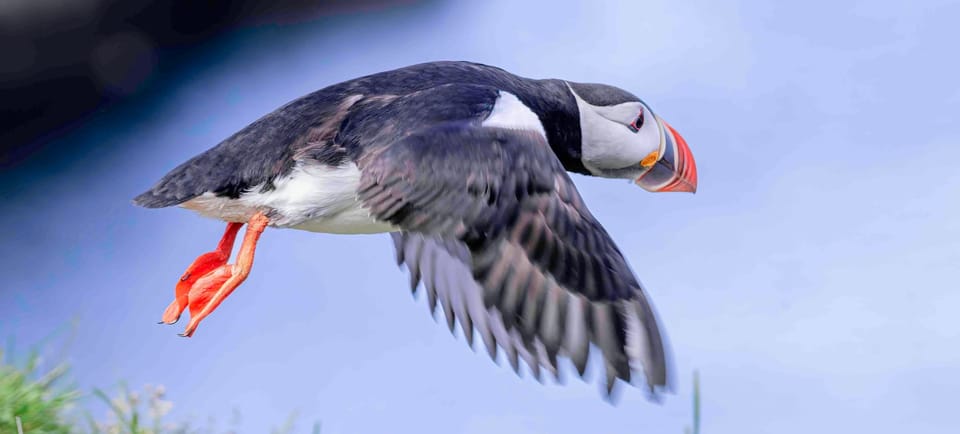
Behold Fratercula arctica, the Atlantic puffin. The clown prince and princess of Iceland’s bird cliffs. They are capable creatures, able to dive 200 feet below the surface of the ocean, dig out a burrow three feet deep to shelter a puffling, and live for months floating on the frigid North Atlantic. They mate for life; their common-law marriages can last 20 years. Their fidelity frequently extends to their burrows, which they may return to year after year, renovating them in time to produce a single egg.
An estimated 8-to-10 million puffins call Iceland home (when they’re not on the water), and that is about half the Atlantic population. Iceland is Puffinland.
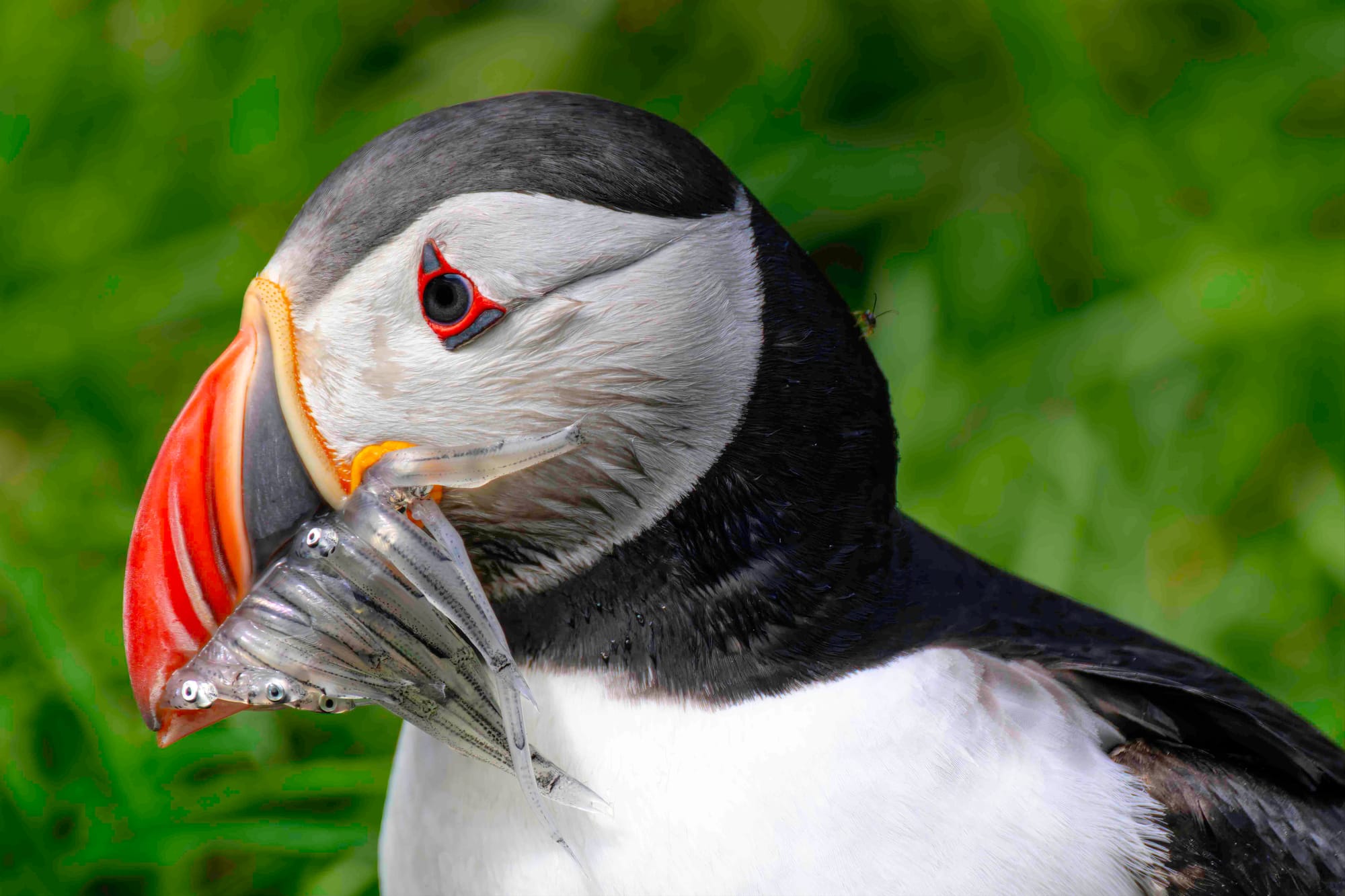
Puffins are pescatarians. Their diets consist mostly of sand lance, sprat, capelin, herring, hake, cod, and eels, and they will grab some squid if opportunity presents. They range up to 10 miles from their burrows to fish, propelling themselves underwater with their wings. They are submarine flyers.
Their beaks are especially colorful during breeding season. The change from non-breeding season is so pronounced, naturalists used to think they were looking at separate species. The beaks have specialized hinges that permit precise control over opening their mouths, and as you can see, they have perfected the ability to cache fish. There are reports of them holding up to 60 at a time; that feels a bit like a sketchy observation, but for sure they can hold a lot of seafood, neatly sorted by a set of spines along the bill’s edge. A specialized tongue provides an assist.
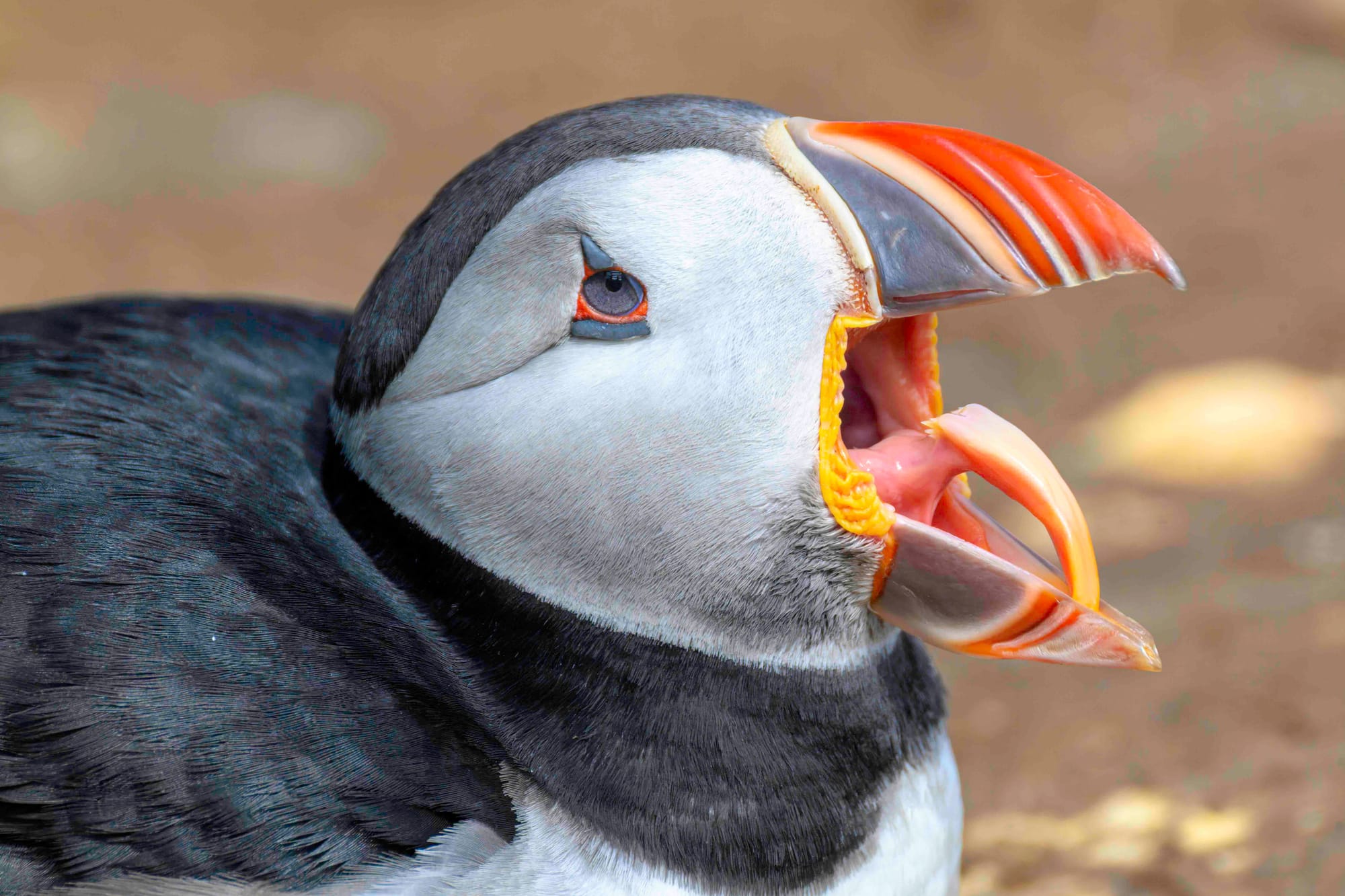
So, yeah, about that tongue. It has backward-facing spines and, as you can see, a puffin can push it up toward the roof of its mouth to secure fish for however long necessary. It can hold one catch in place while it dives to grab more. As cute as they are, they are a menace if you are a sprat or sand lance, cod or eel. Viewpoint matters.
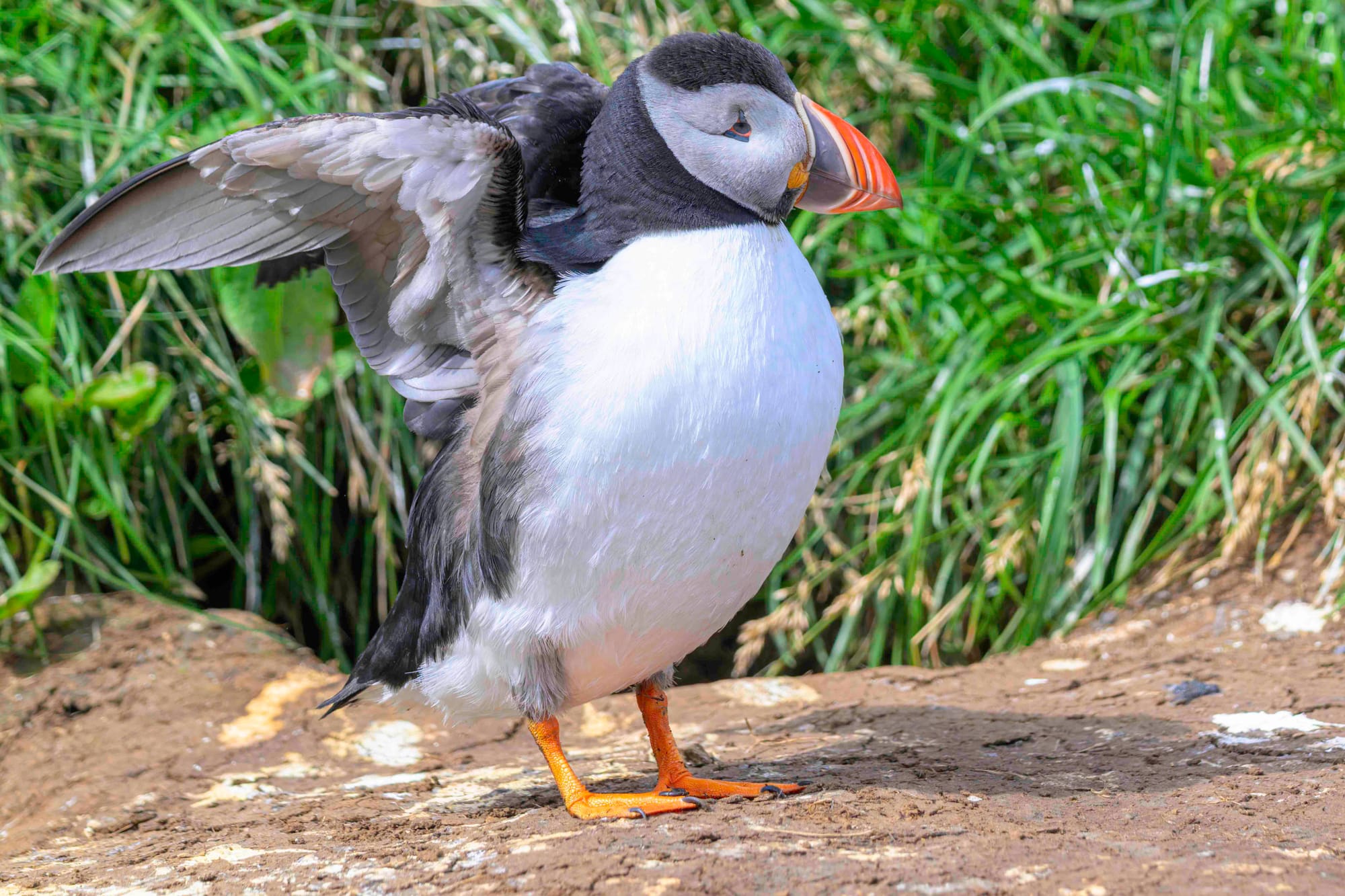
After they fledge out, young puffins slip out in the dead of night and flap to the sea, where they spend several years in a free, floating adolescence before parenthood.
I’ve encountered them all over the world: Maine, Greenland, Iceland. In the latter, they seem unafraid of humans, letting you walk within a few yards of them. I once watched one waddle over to inspect my boot. They make a strange, gravelly call that sounds like a small internal combustion engine cranking up. They sometimes take breaks and just sit around for a while, before preening to keep their feathers waterproof, then darting off to pillage the local hake population. I detest the cutesy, Animal Planet portrayal of wildlife, but puffins? They’re just the best.
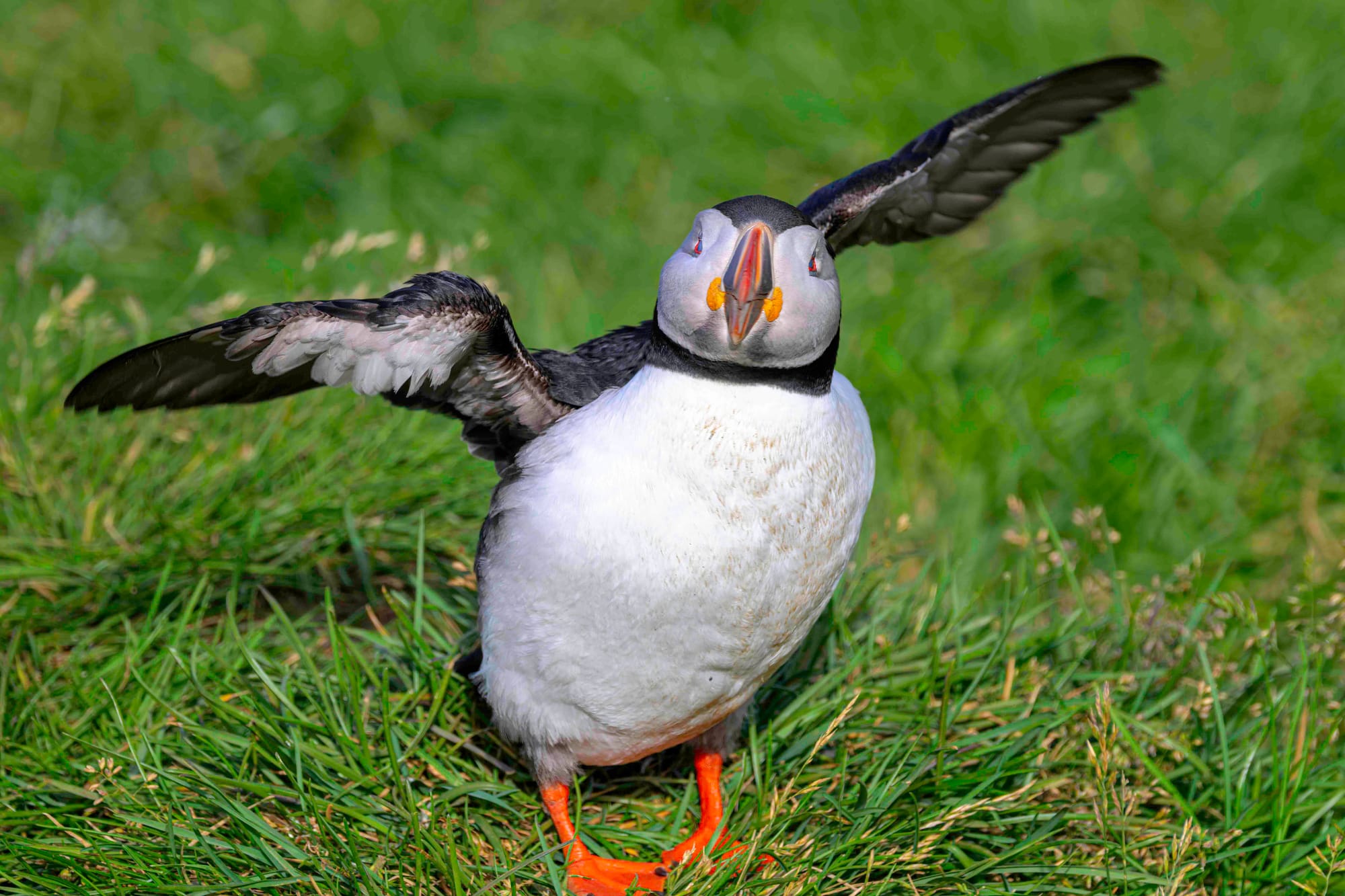
If you’d like to support the spread of cuteness, and who wouldn’t, please become a voluntary paid subscriber. Your inner puffin will thank you.
Member discussion